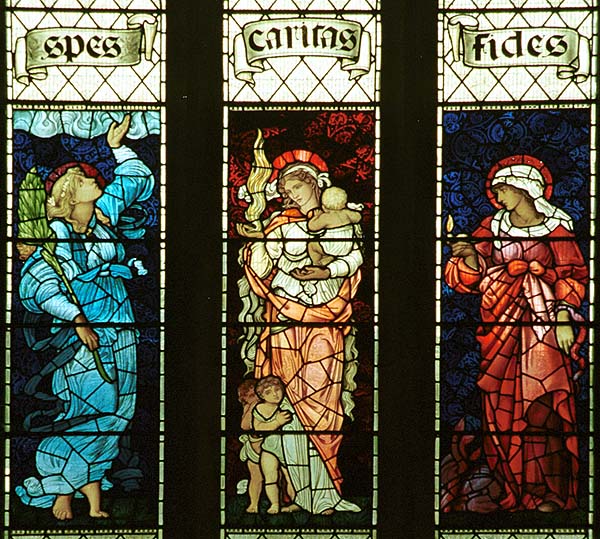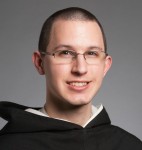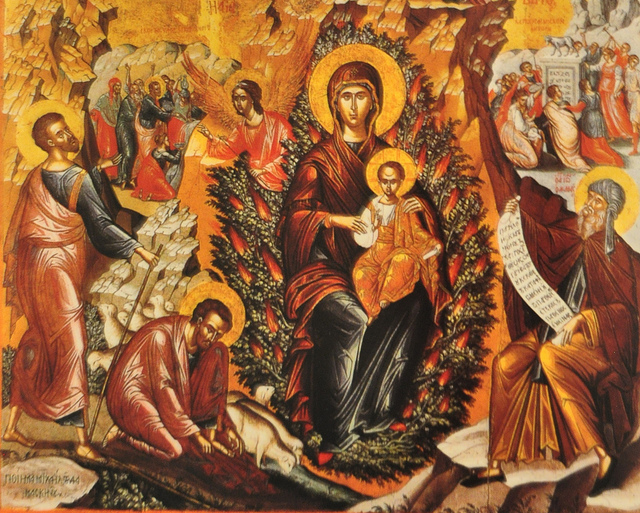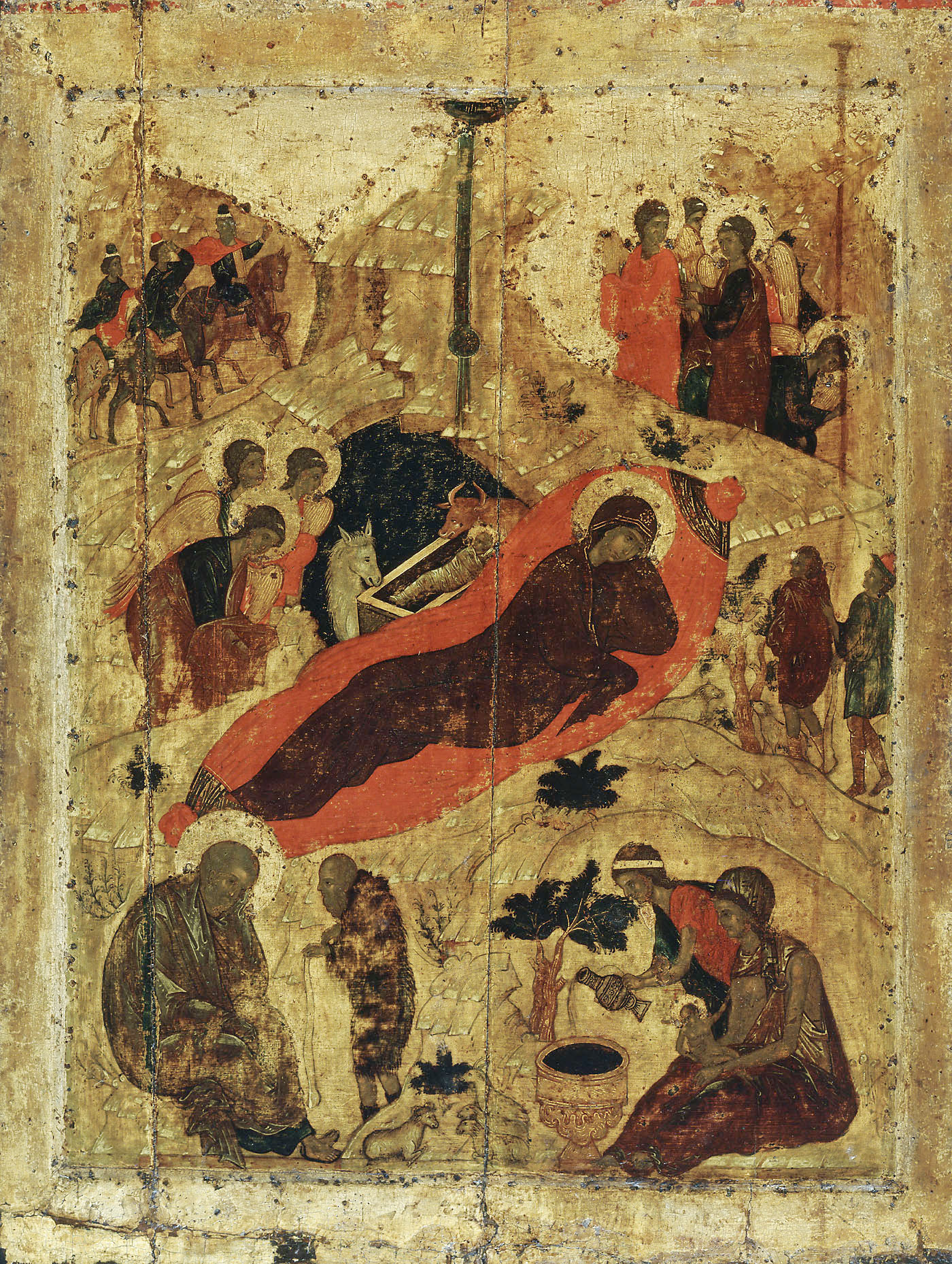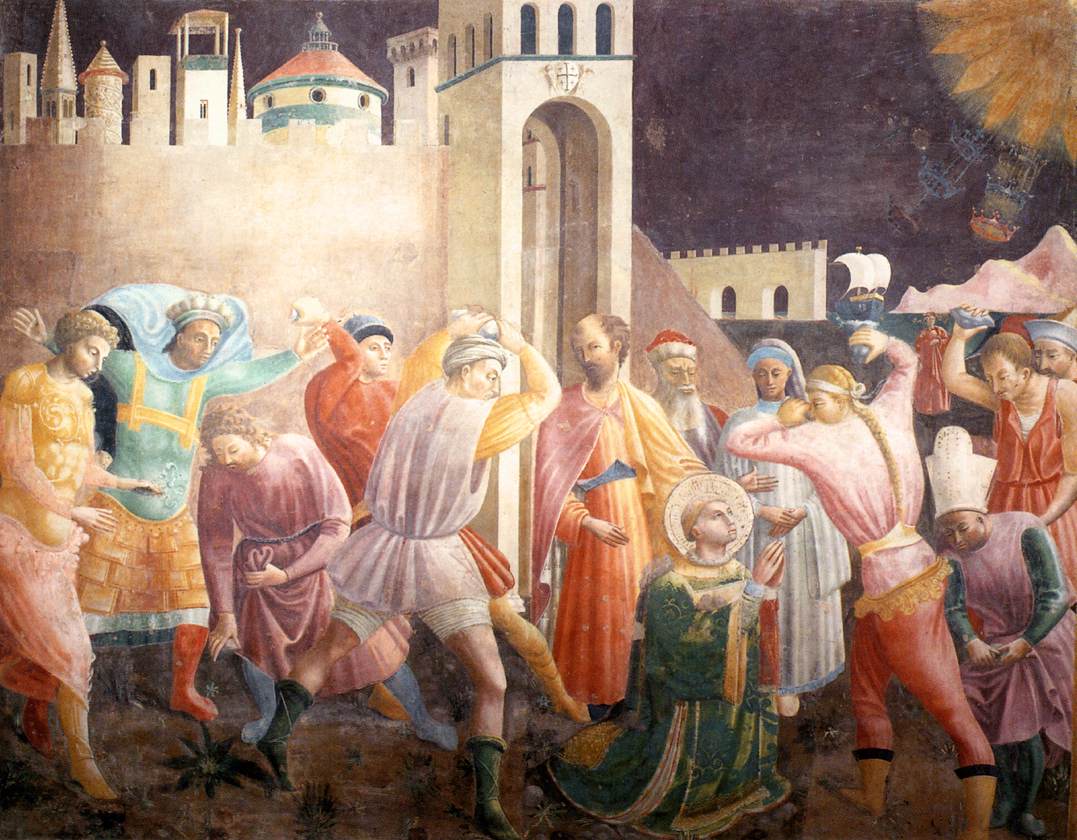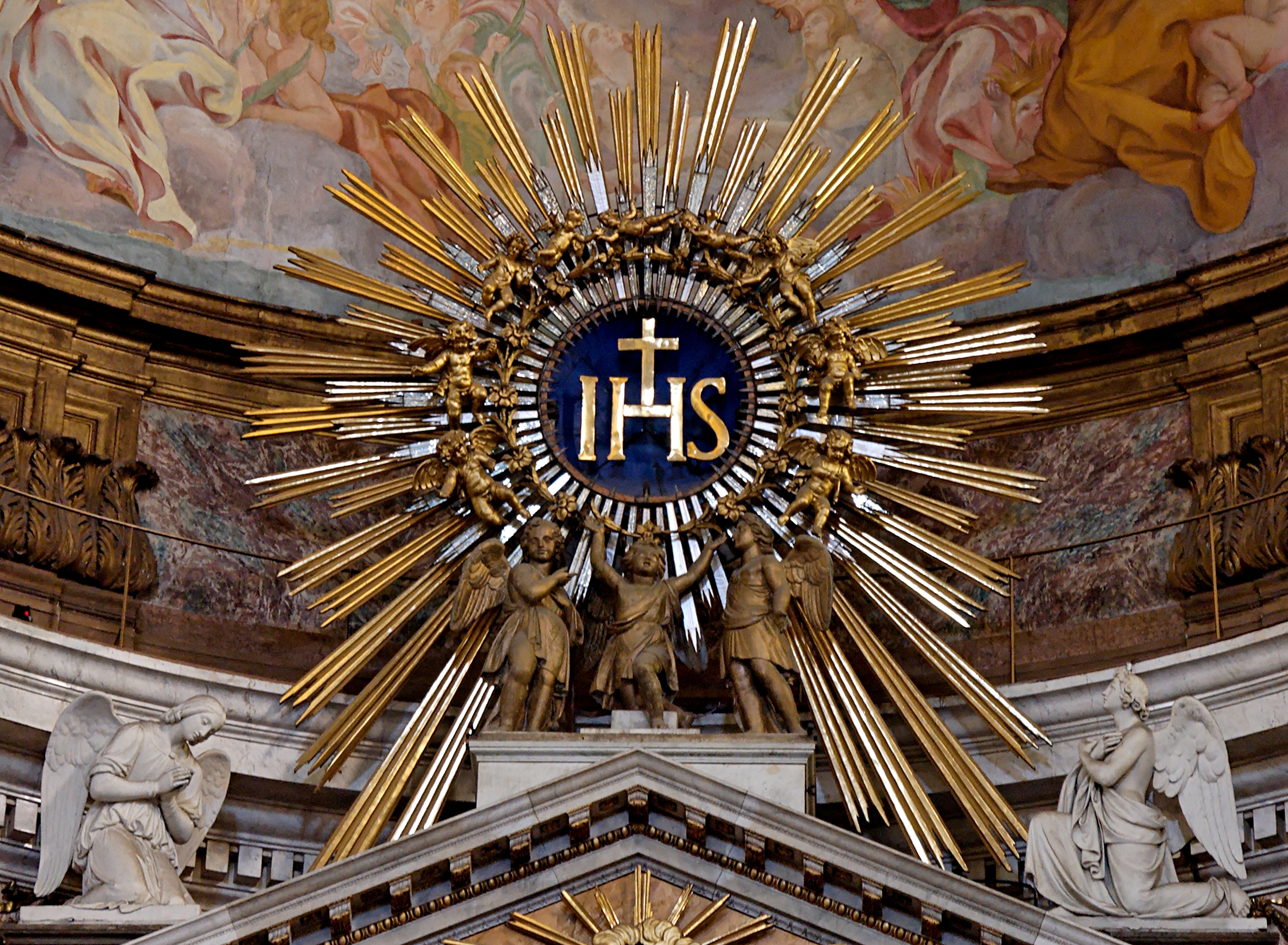
-Church of the Gesu, Rome, Italy, please click on the image for greater detail
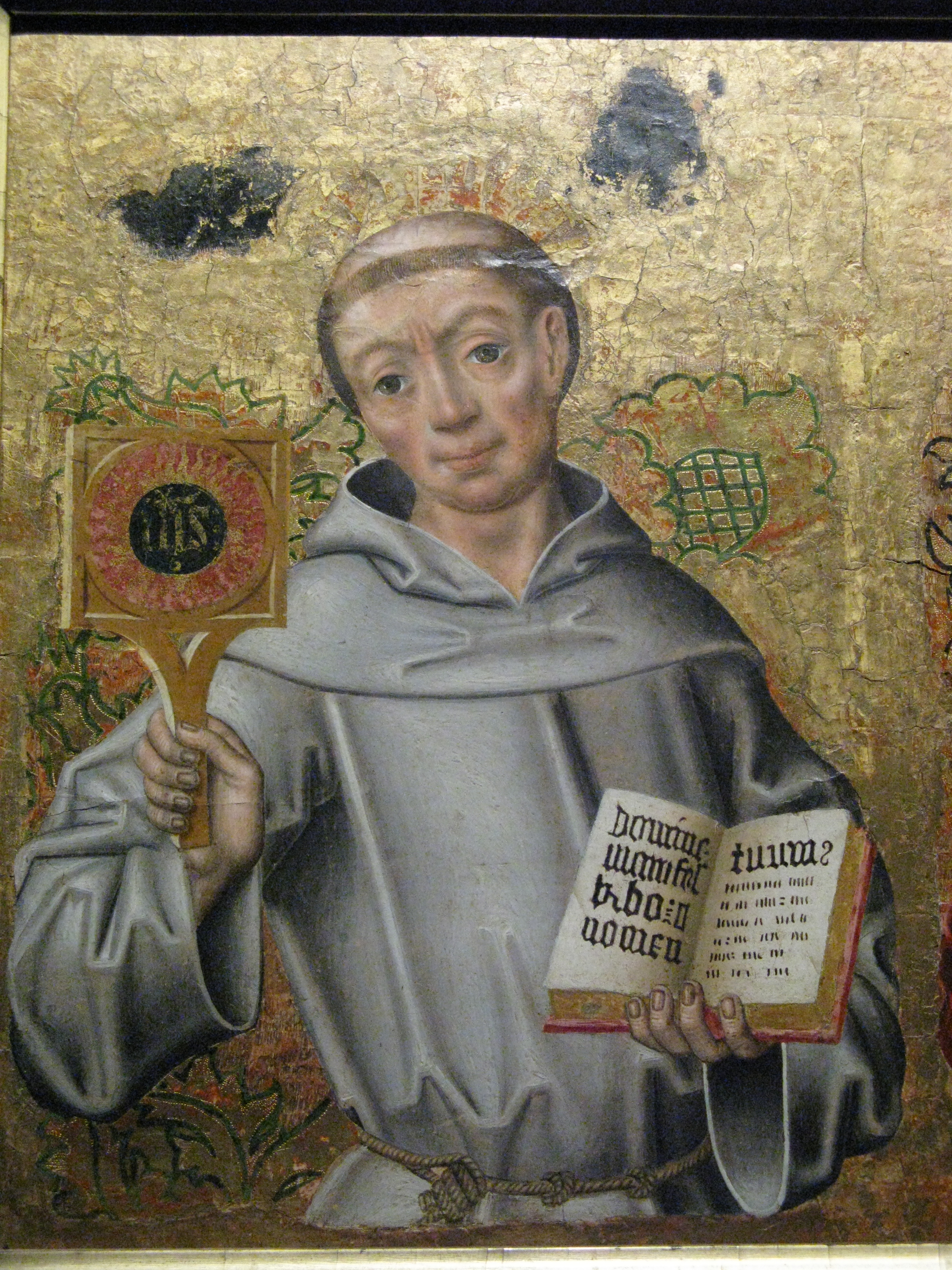
-16th century image of St Bernadine of Siena, OFM, Langeais Castle, France, please click on the image for greater detail
“Salvation is found in no one else, for there is no other name under heaven given to mankind by which we must be saved.” -Acts 4:12
“Preach about vice and virtue, punishment and glory!” -St Francis of Assisi
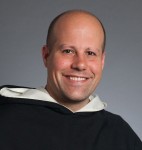
-by Br John Paul Kern, OP (a convert to the Catholic faith through Penn State’s RCIA program, where he earned a Bachelor’s in Mechanical Engineering and a Master’s in Nuclear Engineering)
“Today is the memorial of St. Bernardine of Siena (d. 1444), a preacher renowned for his love for the Holy Name of Jesus.
As a young boy Bernardine’s love for Jesus overflowed into care for the sick during a time of pestilence in Siena. He later joined the Franciscan Order and was assigned the task of preaching, despite a serious throat affliction. God answered his prayers with the miraculous cure of his throat, and Bernardine became a zealous preacher throughout Italy. Through him the Lord converted many individuals and brought genuine reform to the Church. So great was his preaching that Pope Pius II called him “a second Paul.”
Just like that great missionary apostle, Bernardine endeavored to preach “Jesus Christ and him crucified” (1 Cor. 2:2). When Bernardine entered a city to preach, he would have a banner carried in front of him with the Holy Name of Jesus (IHS, Ed. the first three letters of the name “Jesus” in Greek) encircled with twelve golden rays and a cross at the top. When he preached he had this symbol placed next to the pulpit, and at his encouragement the Holy Name of Jesus was placed on many altars, churches, and even on the public buildings of large cities. Bernardine had great faith in the power of Jesus’ name.
Do we believe in the power of “the name which is above every name”? Or do we hesitate to speak the name of Jesus Christ, “the power of God and the wisdom of God,” because it is a “stumbling block” and “folly” in the eyes of many of our peers? (1 Cor. 1:23-24)
Indeed, there is no other name that receives as strong and diverse an array of reactions as the name of Jesus. No other name elicits such love, peace, and joy among those who know him. No other name elicits such vitriol, scorn, and anger among those who do not.
Even those who express an initial apathy toward the name of Jesus tend to react quite powerfully when they encounter a person speaking of Jesus with great passion and love. Waning belief is enkindled into hope. “I do desire this Jesus!” “How can I find him?”
Other times, disappointment and hurt bubble to the surface, displayed as shock and skepticism. “You are crazy!” “You cannot know Him like that!” “You are brainwashed! Jesus isn’t a friend and savior!” People react strongly when they hear something they believe is too good to be true. Compared to any lesser truth we have known and experienced in our lives, Jesus, Who is Truth, does seem too good to be true.
Great thinkers and spiritual seekers have questioned, reasoned, and intuited their way to the existence of a First Cause from His effects in the world. The invisible God identified Himself sensibly to Abraham as “I am” (Ex 3:14), and this revelation allowed many people to know of God’s existence. But God became uniquely visible for us in Jesus Christ so that even the most ignorant, distracted, and skeptical of us can come face to face with His goodness, grapple with our doubts, and ask “how can this be?” and “are you for real?” There is only one name that brings everything—our lives, our joys, our sufferings, the good and evil that is in the world, in human history, and in ourselves, the apparent chaos and order of the cosmos—into focus.
We do not see Jesus incarnate with our eyes, as people 2000 years ago did. But He remains incarnate in a lesser way in his body the Church, of which we are his members. We are each united to Christ, and He lives in each of us, creating diverse points of encounter between Himself and the world through us. And yet when people see the toe, the finger, or the hand of God at work in meeting us, they may not realize whose members they are meeting. “Mother Teresa was a good person.” This is true. But to ensure that people correctly identified God as the author and source of this goodness, she always emphasized that she was but a pencil in the hand of God and that it was Jesus who was at work through her, loving the poorest of the poor. She wanted people to know Him by name.
Charity, the love that God invites us into, is not an anonymous or distant love, but a personal love. St. Thomas Aquinas writes that “charity is the friendship of man for God” (ST II-II, q. 23, a. 1).
Friendship requires that love be mutual and that both friends know that they are loved by their friend. You cannot be friends with a nebulous cosmic force or anonymous first cause, no matter how benevolent you regard it to be or how grateful you are to it for your existence. However, Jesus was and is a friend, even of sinners, and he desires that all people share in this love of friendship. But in order to enter into this friendship, as with all friendships, we must know the name of the other.
This is why, in addition to preaching the Gospel through our actions, sharing Him by our joy, praising Him for the goodness and beauty of His creation, and witnessing to Him by our love, we must speak His name so that all people may know Him and love Him. May we, like St. Bernardine, boldly proclaim this name of Jesus, the only name by which we may enter into eternal life.”
“When a fire is lit to clear a field, it burns off all the dry and useless weeds and thorns. When the sun rises and darkness is dispelled, robbers, night-prowlers and burglars hide away. So when Paul’s voice was raised to preach the Gospel to the nations, like a great clap of thunder in the sky, his preaching was a blazing fire carrying all before it. It was the sun rising in full glory. Infidelity was consumed by it, false beliefs fled away, and the truth appeared like a great candle lighting the whole world with its brilliant flame.
By word of mouth, by letters, by miracles, and by the example of his own life, Saint Paul bore the name of Jesus wherever he went. He praised the name of Jesus “at all times,” but never more than when “bearing witness to his faith.”
Moreover, the Apostle did indeed carry this name “before the Gentiles and kings and the sons of Israel” as a light to enlighten all nations. And this was his cry wherever he journeyed: “The night is passing away, the day is at hand. Let us then cast off the works of darkness and put on the armor of light; let us conduct ourselves honorably as in the day.” Paul himself showed forth the burning and shining-light set upon a candlestick, everywhere proclaiming “Jesus, and Him crucified.”
And so the Church, the bride of Christ strengthened by his testimony, rejoices with the psalmist, singing: “O God from my youth you have taught me, and I still proclaim your wondrous deeds.” The psalmist exhorts her to do this, as he says: “Sing to the Lord, and bless His name, proclaim His salvation day after day.” And this salvation is JESUS, her savior.”
– from a sermon by Saint Bernadine of Siena
“Bonfires of the Vanities” were held at his sermon sites, where people threw mirrors, high-heeled shoes, perfumes, locks of false hair, cards, dice, chessmen, and other frivolities to be burned. Bernardino enjoined his listeners to abstain from blasphemy, indecent conversation, and games of hazard, and to observe feast days.
“Prayer is the best preparation for Holy Communion. Prayer is the raising of the mind to God. When we pray we go to meet Christ Who is coming to us. If our Creator and Savior comes from heaven with such great love, it is only fitting that we should go to meet Him. And this is what we do when we spend some time in prayer.”
–St. Bernardine of Siena
“The last degree of love is when He gave Himself to us to be our Food; because He gave Himself to be united with us in every way.”
–St. Bernardine of Siena

Prayer
“Jesus, Name full of glory, grace, love and strength! You are the refuge of those who repent, our banner of warfare in this life, the medicine of souls, the comfort of those who morn, the delight of those who believe, the light of those who preach the true faith, the wages of those who toil, the healing of the sick.
To You our devotion aspires; by You our prayers are received; we delight in contemplating You. O Name of Jesus, You are the glory of all the saints for eternity. Amen.”
-St. Bernardine of Siena
Love,
Matthew
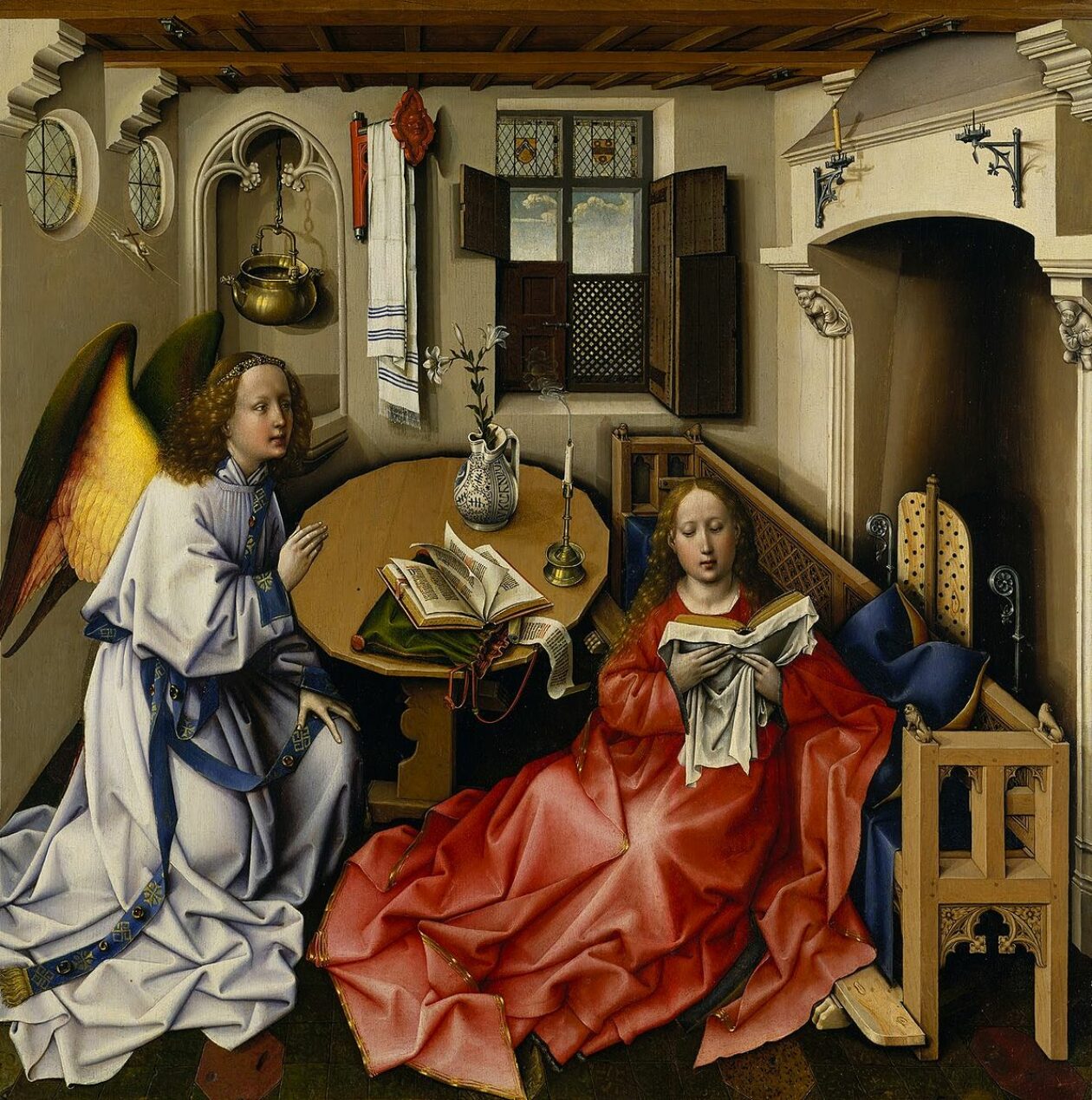





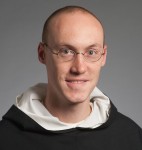


![Serpa_Fr_Vincent161[1]](https://soul-candy.info/wp-content/uploads/2015/06/Serpa_Fr_Vincent1611.jpg)







